62 seconds. That’s the average amount of time a user will spend on a website before hopping to another page. 62 seconds for your website to show off all your company has to offer. 62 seconds for you to create a spark of interest that will keep your customer’s cursor away from the dreaded back button. The attention span of modern internet users is a fickle thing, dashing between emails, articles, quick searches, and more. So when you have only a little over a minute to hook a viewer, you better make every second count. A beautiful landing page can grab a viewer’s attention, but a strategically crafted landing page will keep them there. Below are some tips that top digital marketing & website design agencies use to hold the attention of your audience when they land on your site.
Helping Your Users Take Action with Interaction
A favorite UX design practice to encourage digital engagement is the use of interactive elements. This elevates the user experience from passive observer to a participant (referring to any degree of interactivity) on your landing page. When inviting users to interact with content, UX designers tread a fine line between doing too little and asking too much from their audience. Subtle elements such as eye-catching hover states and scroll-initiated animations are one way to get the user involved and create interesting effects based on their cursor movement or scroll. The logic behind these interactive elements is basic psychology — rewarding the user for viewing your content or scrolling encourages them to continue this action. Once visual interest is sparked, the user is more likely to continue scrolling on-page to view content and eventually reach a lead generation form.
Lending Your Users a Hand with Custom Cursors
Another top trend in interactive content is custom cursors. Brands are beginning to implement custom cursor shapes and styles, and even animations triggered by placement on-page. One of Bluetext’s favorite examples of interactive landing pages is Asimily, a page with several subtle interactive elements, including new content triggered on scroll, animated hover states, and typography motion.
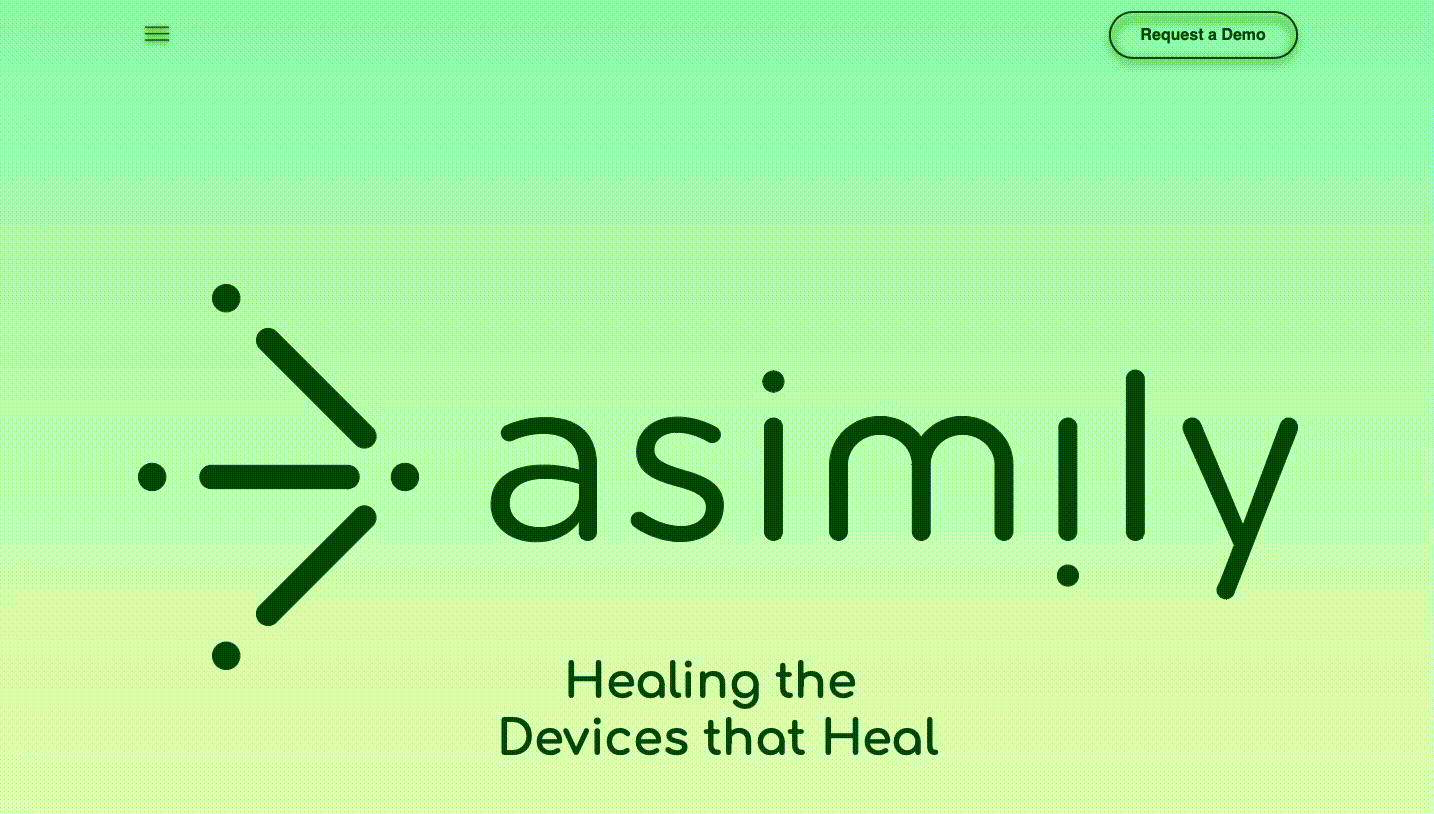
Animations That Keep Your Audience Still
Animation is also a powerful tool to capture and retain attention, with elements like looped animations ensuring that a user catches an effect and can continue to watch it. Animated promotional videos can also be leveraged into powerful lead generation tools. Videos are quite effective for generating leads because they present a simplified version of your offering, and are far more engaging, and require less effort than reading an article. Animations are a great way to convey key information more efficiently and effectively on what your brand has to offer.
Take the Lead with Your Landing Page Strategy
Ultimately, these little changes can make a big difference in converting prospective customers into solid leads. There are many other ways to increase leads to supplement interactive elements. Targeting by channel, limiting navigation, including a clear call to action, and communicating key insights clearly all contribute to a more impactful strategy. Aggregating strong messaging, website design, and user experience best practices can enhance conversion rates on landing pages. Need help achieving better leads? Bluetext is here to bring stronger leads to your company through exceptional content and design.
New year, same buzzwords. We’re all familiar with the phrase “machine learning”, but finding a practical application for it that supports your business model is another story. The key to effective digital marketing campaigns is taking full advantage of emerging technologies, and if you’re looking to increase your marketing team’s productivity and efficacy, look no further than machine learning. From paid media campaigns to search marketing strategies, recent machine learning enhancements have skyrocketed its digital potential. As brand marketing becomes more closely integrated with performance marketing, introducing ML to your digital marketing strategy is an effective way to assist your team on both fronts.
According to Google’s Chief Search Evangelist, “The future of brand marketing is digital, and it’s automated. As a brand marketer, if you can start thinking like performance marketers when it comes to KPIs, measurement, and budgets, you’ll be poised to win.”
Looking for ways to get started with machine learning in your marketing processes? Here are a few ideas:
-
Introduce personalization at scale.
Personalized advertising is a tried-and-true success tactic, and machine learning makes personalization at scale easier than ever. Whether you’re personalizing for 100 users or 100,000, AI makes the process quick and effective. Better-targeted ads, personalized messaging, and individualized user journeys are just a few ways that ML can boost your brand. -
Leave the bidding to the machines.
Free up your team’s time by handing off PPC management to a tool like Google Smart Bidding. With automated bidding, your team can focus more on strategic planning and goal-setting instead of cent-by-cent differences. -
Implement a chatbot on your website.
Chatbots are simple integrations that can have a major impact on the conversion rate of your site. The best chatbots use AI to make the customer’s journey as simple as possible, guiding them to the right information or product with minimal back-and-forth. Trusona uses a pre-populated chatbot, so users don’t have to lift a finger to type a response; they can simply choose from the options presented. -
Iterate, optimize, and iterate again.
Iteration is one of the greatest strengths of processes that use machine learning; rapid analysis of digital performance means that your team can respond in real-time to shifting trends and interests. Ultimately, the introduction of machine learning to your brand’s marketing tactics will result in better products and better performance.
Implementation of machine learning could be the next major step in your brand’s growth. To learn more and see how Bluetext can partner with you in that growth, contact us.
Second-only to your homepage, your sitemap is one of the most important and most visible parts of your website. What value is a website if people can’t find the content they are looking for?
A sitemap is quite literally a map of your website’s page inventory. Sounds simple right? As a content creator, you may know exactly where all of your content lives and how to get from Point A to Point B but to an unfamiliar website user, this may not be as intuitive. To complicate the process even further, creating a sitemap is not always black and white. Every website and its content is different, but there are certain steps you can take to develop the most user-friendly version possible.
Prioritizing Specific Content
Your first step should be determining what type of information will be available on your site, and more importantly how that information should be prioritized to meet business goals. First, it is important to conduct a content audit to take inventory of what is available to the user. Are you featuring lots of products? Are you trying to build up your thought leadership presence? Do you need a lot of information to educate users about your services, or will they already know about your area of expertise when they come to the site? Establishing your top three objectives for the website is a great place to start when conducting a content inventory.
After you have an idea of what kind of content your site will feature, you should take a step back and imagine being in the shoes of your target audience. What might your users look for? And how do they phrase their needs? While you might have an internal structuring of products or services that makes sense to employees with deep technical knowledge, your website is for a broader, often less specialized audience. Consult your SEO keyword strategy to ensure your menu labels match organic search teams. Added bonus: Google crawlers pay special attention to a website’s sitemap, making it a golden opportunity to embed top keywords. Make sure that any terms you use will be searched by your ideal audience and are likely to catch their attention on the website.

Establishing your Navigation Structure
Next, you will need to think about the most intuitive way to structure your main-level navigation in the menu bar. This navigation will be present on every page, and for ease of use, it should be relatively short (we usually recommend four to seven items). You can have many child pages under this navigation, but you want to make sure that those top-level items present a few clear high-level categories to organize the information below them.
Once you have determined your top-level navigation, it’s time to determine the child, and even grandchild, pages that will live below in the website menu. While it might seem like you need a new page for every topic, think critically about what could be on-page content and what should be entirely its own page. Some pages might fit under a couple of umbrella categories, but make sure that pages are neatly assigned and do not repeat in different areas of the menu. For accessibility reasons, you want each page title to appear only once. Menu duplicity is a common problem for companies offering both “products” and “solutions”. While the argument could be made to categorize a page under either one, you should strive to pick one.

Don’t Forget About the Utility Navigation
After structuring your main navigation, make sure you don’t forget to add items to your utility navigation as well. The utility nav is a great opportunity to pull out some important content that otherwise might get buried in your website. The utility navigation is the smaller links above your main menu and is always present at every step of the user journey. This is a perfect opportunity for ever-green content that appeals to broad audiences. For example, we often recommend putting careers in the utility navigation to make it easier for potential employees to efficiently find job listings and apply.
These steps will surely get your website sitemap off to a great start! However, keep in mind this is an iterative process and will need to be updated as needed. By tracking in-site searches in Google Analytics, you can see what users seem to have trouble finding through the navigation alone. If any term is getting significant search traffic, it might be worth changing the sitemap to make that content more clearly available.
Creating a sitemap can be challenging, and often benefits from a fresh, third-party perspective. Trusting a content marketing & user experience agency, like Bluetext, can help establish clear content goals and a reorganized sitemap. Contact Bluetext to learn about our experience creating intuitive sitemaps that will make your site shine.
Just like you can’t judge a book by its cover, you can’t trust a search by your top results. But how is that so? It contradicts all we believe to know about search engines, and cracks the inherent trust users put into “Googling it.” The truth is, even the most tech-savvy digital marketers don’t know the exact rhyme and reason behind Google’s search algorithms. So, what do search engine marketers know? It is widely known and confirmed that keywords and a handful of other core factors are being prioritized by crawlers in organic search rankings. We know the golden rule is relevancy, and various content and technical signals determine a relevant match to a user’s keyword search and top-rated results. But recent news has revealed you can’t take everything for face value, as even the tech giant itself is susceptible to hacking campaigns.
The latest trend in malware has been termed SEO poisoning, or “search poisoning”. This attack method relies on optimizing websites using ‘black hat’ SEO techniques to rank higher in Google search results. These ‘black hat’ optimized websites are in fact malicious, but due to a high SERP ranking deceive victims into believing these sites are legitimate and clicked by visitors looking for specific keywords.

SEO for Ransomware
According to the findings of the Menlo Security team, SEO poisoning cases are on the rise. Notorious ransomware groups, SolarMakers and REVil, are thought to be attributed to some recent attacks. Their campaigns used SEO poisoning to serve malicious payloads to their keyword-seeking targets. After optimizing sites with keywords that cover over 2,000 unique search terms, the sites appear top in a user’s search results page (SERP). These sites appear in search results as PDFs, and when visited, prompt a user to download the document.
When a user clicks the download button, they are redirected through a series of websites that ultimately drop a malicious payload. The threat actors use these redirects to prevent their sites from being detected and removed from Google search results for malicious content.
In the two most notable campaigns, Gootloader and SolarMarket, the actors didn’t create their own sites but instead hacked legitimate WordPress sites with strong Google search rankings. How? By abusing an undisclosed flaw in the ‘Formidable Forms’ WordPress plugin, which the hackers used to upload malicious PDFs. B2B websites were the most heavily targeted, as they are known to naturally host a large library of downloadable PDF resources.

So What Does This Mean?
For users, do your due diligence. Not all is as it appears online, even on trusted sites like Google. Exercise caution, keep up with your antivirus programs and monitor for suspicious links or potential phishing scams. A cybersecurity hack could result in breached sensitive data or require a ransomware payout.
For businesses, beware. Hackers have learned targeting high-value companies can yield much higher payouts (millions compared to the measly hundreds in consumer ransoms), especially if there is a high likelihood their attack will affect many users. Maintaining a healthy website entails regularly updating plug-ins, installing preventative security measures, and conducting frequent tests.
Does your website need a check-up? Or perhaps a new fitness regime to keep website health goals on track? Contact Bluetext to learn how our website development, optimization, and maintenance services could cure your security concerns.
In true Google fashion, Google Ads is changing the way you can advertise again. Previously, you were able to create Expanded Text Ads (ETAs), but beginning June 30, 2022, all of your standard search campaign ads will need to include at least one Responsive Search Ad (RSA) per ad group. The good news is this can improve your search campaign’s performance if managed correctly. And at least for now, ETAs are not fully leaving. In fact, Google even recommends having two ETAs along with an RSA for each ad group. Diversifying your ad groups sounds great in theory, so maybe Google is doing digital marketers a favor. Nevertheless, change is change, even in the most advantageous versions. So let’s break down why including RSAs can help your business achieve campaign objectives.
First, What Are RSAs?
RSAs could be considered within the next-generation tech wave of AI marketing, almost like a self-driving car for your search campaigns. Responsive search ads let you create an ad that adapts to show more text—and more relevant messages—to your customers. Enter multiple headlines and descriptions when creating a responsive search ad, and over time, Google Ads will automatically test different combinations and learn which combinations perform best.

How do RSAs differ from ETAs?
One of the key differences between ETAs and RSAs is that RSAs are more dynamic. Rather than creating multiple ads for different users, now you can create a single RSA with various headlines and descriptions, then Google will automatically tailor the ad to fit the user’s needs. RSAs allow you to set up to 15 different headlines and up to 4 different descriptions. The drawback to this new method is that you can’t preview the exact combination of text users will see, so you need to ensure your headlines and descriptions can all work together. But more on that later!
While ETAs give you more direct control over your ads, they also require you to update them more frequently to remain relevant. RSAs however require fewer updates since they can provide fresh combinations of headlines and descriptions to users on each visit. This ensures your ad copy doesn’t go stale and can match up top-performing headlines to the potential customers. The tradeoff for this benefit is that RSAs typically take longer to set up, as they require more thought initially.
So how can you prepare?
One of the things you can start doing is experimenting with RSAs for testing purposes. Meaning, you should continue creating your ETAs for now, but supplement them with RSAs to get the hang of the upcoming change. This combined approach allows you to experiment with your optimal ad copy while also leveraging Google’s machine learning insights. Beyond that, you can experiment with pinning headlines in your RSAs. This gives you similar control of your ads to ETAs by ensuring specific copy appears in the first, second, or third position of your headlines.
Machine Learning-Based Recommendations
Google’s shift towards RSAs is pushing advertisers to rely on Google’s machine learning algorithm more and more. A benefit of this change is more relevant recommendations for your account’s performance. While these recommendations can help you discover new relevant features and improve your bidding strategy, an experienced digital marketing agency such as Bluetext can help steer your campaign to success.
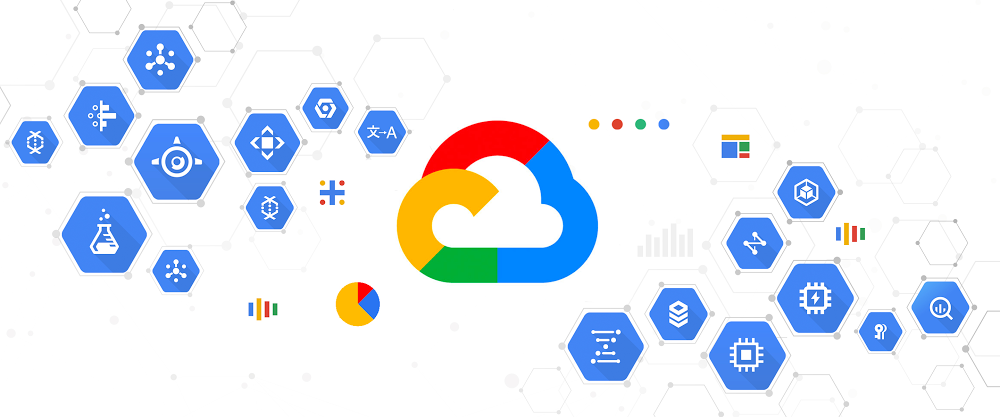
Ongoing Performance Monitoring and Improvements
While the recommendations page can assist you in finding some trends based on historical data, you’ll still need valuable data to base those decisions on. That’s why any good campaign should utilize ad variants to test different messages. That way your historical data can reflect a range of ad variants and you can determine which combinations work best. This also allows you to determine the best way to tweak each ad for ongoing performance optimization.
When it comes to these ongoing performance-based adjustments, you should do your due diligence in checking the data. But data is data, without proper interpretation of insights, there are no actionable changes to truly optimize your ad spend. That’s where digital marketing expertise can make a difference. Bluetext’s search campaign experts are skilled at sifting through marketing data to identify trends and recommend areas for improvement. Want to learn more about how Bluetext can help your ad campaigns thrive? Get in touch with us here.
We’ve all heard the old adage “the medium is the message” – and that could not be more true in today’s vast media landscape where the majority of users are browsing websites on mobile devices. Knowing that users are visiting your website and often encountering your brand for the first time on a mobile platform, it is essential to thoughtfully design a mobile user experience that takes into consideration both the benefits and limitations of mobile devices as well as known user behaviors.
Mobile web design should not just be a narrowed version of the desktop experience, it should be a responsive design in and of itself that gives way to an intuitive user experience and easy navigation to the information the user is looking for. There are so many variables that can cause a user to leave a website. A slow-loading page or poor content layout can be enough to drive users away – don’t let a lack of forethought when it comes to the mobile user experience be a barrier between your audience and your website. By implementing the following best practices, you will be sure to create the best mobile experience for your users:
Ease of Click is Key
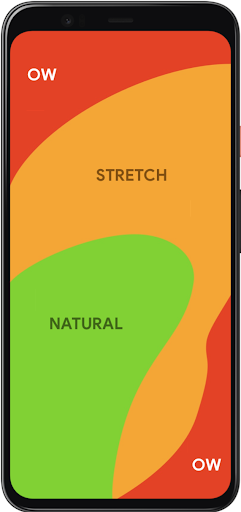
You should always keep in mind what we know about all users visiting your website – every action you ask them to take should be as easy and frictionless as possible. Before even considering the content that will go on a page, you need to consider where on page it will be most accessible. In 2011, Steven Hoober and Eric Berkman published a study called “Designing Mobile Interfaces” in which they coined the term “thumb zone.” This refers to the areas on mobile screens that are most easily reached by the users’ thumbs and therefore where all important clickable items should be placed. Placing important buttons and links in difficult-to-reach areas on screen can add barriers to content and therefore detract from the overall user experience.
Intuitive Navigation
Whether a user knows exactly what they’re looking for or they are purely just browsing on your site, the path to information should always be clear and natural. Creating the best navigation for your site requires thoughtfulness of content and consideration of your audience and the way they are used to maneuvering through a website. The navigation should make sense for the content you have to offer while also aligning with the organizational structure that your users are familiar with. There are many correct ways to layout the navigation of your website, you just need to find one that is the best fit for you and your audience. Employing intuitive navigation on your website is particularly important on mobile platforms because eliminating clicks to content while also having a well-organized site structure can assuage user frustration, encouraging them to stay on your site longer and to visit more pages. Solutions like hamburger menus help organize the menu in a way that the user isn’t overwhelmed by the menu items all at once when first arriving on the page while also mimicking the structure of the desktop site.
Cross-Device Consistency
While the mobile experience of a website should not just be a minified version of the desktop interface, keeping consistent UX design across desktop, tablet and mobile devices should always be a priority when creating your website. Responsive design across the board is crucial when trying to keep the user from disengaging from your site. Any inconsistency that arises when switching from one device to another can create confusion for the user and create the perfect opportunity for them to leave your website. Once again, it always comes back to making everything seamless and easy for your user. The mobile web design should be a full experience in and of itself that considers the intricacies of mobile user behavior while also mirroring the overall UX of the desktop interface. It is a delicate balance but is very worth it when done right.
Prioritization and Breakdown of Content
Simply due to the nature of mobile devices, there simply isn’t much space to fit content in one viewport. This means that in order to encourage your audience to 1) consume the content you write and 2) take away the most important points, you have to visually break up content to make it digestible while also pulling out the highlights as visually engaging elements on the page. Drawing users to your website is a challenge in and of itself – this is only compounded by the challenge of capturing enough of their attention so that they read a significant amount of content while on your site. The reality is you have a very short window to grab their attention and once you have it, concisely driving home the main takeaways is crucial. On mobile, in particular, breaking up content into chunks rather than overwhelming the user with massive blocks of text is a good way to make it all seem more approachable especially when you are trying to fit content into such a small screen. Highlighting specific points using statistics and images in a visually interesting way is a great way to also hold user attention.
Conclusion
Users have shown over a number of years now that the age of mobile device browsing is here to stay and if you choose to ignore it, you will get left behind. When designing for mobile devices, there is so much to be gained by considering what we know about users and the way they physically interact with their devices, and the way they consume content. Mobile web design principles center around the idea that users should always be presented with the path of least resistance when it comes to finding the information they need on your website as well as actually clicking the button to get there.
If your website needs a mobile makeover, contact Bluetext to learn about our website user experience design services.
Scroll-based animation offers all the benefits of on-page animation and more. Not only do pages with scroll-based animation engage users more effectively, but they can also tell more complex stories, improve page load time, and expand the capabilities of your brand identity.
Some stories are best told visually, and scroll-based animation is an effective way to make complex stories simple and elegant. Designers can use animation to guide users as they scroll, catching their eye at exactly the right time and place. Apple incorporates subtle animations into its product pages to drive user focus toward key information they want to highlight.
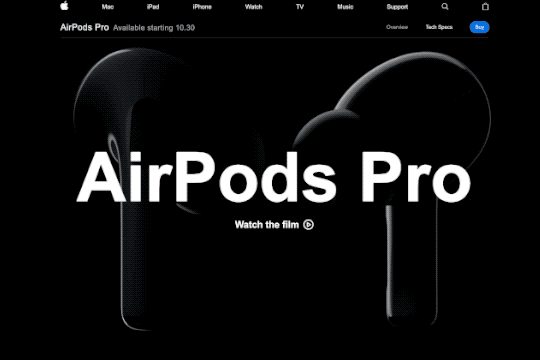
Scroll-based animation can offload elements beneath the virtual “fold” from the initial loading process, decreasing overall load time. Elements above the fold are prioritized in the initial load, saving time on down-page items that are animated to appear as the user scrolls down.
Implementing scroll-based animation provides the opportunity to add animated elements to your brand. Whether they’re completely new, or existing pieces that have been updated with motion, animated elements can help bring your brand to life. Elements like a scroll-based footer or call-to-action can be used across a website to consistently call attention to key information about your brand.
Key Tips for Scroll-Based Animation
Getting started with scroll-based animation can be tricky, so here are a few pointers to keep in mind as you go.
- Timing is everything. The flow of the animations as a user scrolls down the page is key to maintaining their interest. As a user moves down the page, elements should naturally animate or appear, so there are no gaps in the experience. A simple, well-timed scroll-based animation is always better than a complex but awkward one.
- Added effects should emphasize key information, not detract from it. Keep in mind that the whole point of on-page animation is to make it easier for users to navigate your site and find what they’re looking for. Be sure that any effects or animations make their experience easier, not more difficult.
- Less is more. When in doubt, simplify. Avoid cluttering your site by animating every element on a page or by introducing particularly drawn-out animations for no reason. As a rule of thumb, smaller elements should have shorter animation cycles, and each animation should have a purpose in guiding the user experience.
Looking for inspiration?
Clarabridge’s animated homepage brings the brand to life and elevates the user experience. On-page effects guide the user through the homepage, emphasizing the strength and ease of Clarabridge’s solutions. Click here to read our case study on this project.
HuffPost’s interactive article, Chef Jose Andreas Embraces the Chaos, is an example of “scrollytelling,” which uses scroll-based animation to enhance a written story. Hand-drawn visuals appear as the reader scrolls through the story, adding a playful, personal feeling to the page.
For Calling All Optimists, Bluetext incorporated subtle scroll-based animations throughout the site to draw attention to key information or calls-to-action. Along with the brand’s playful shapes and colors, these animations reinforce the positive, dynamic qualities of the site. Click here to read our Calling All Optimists case study.
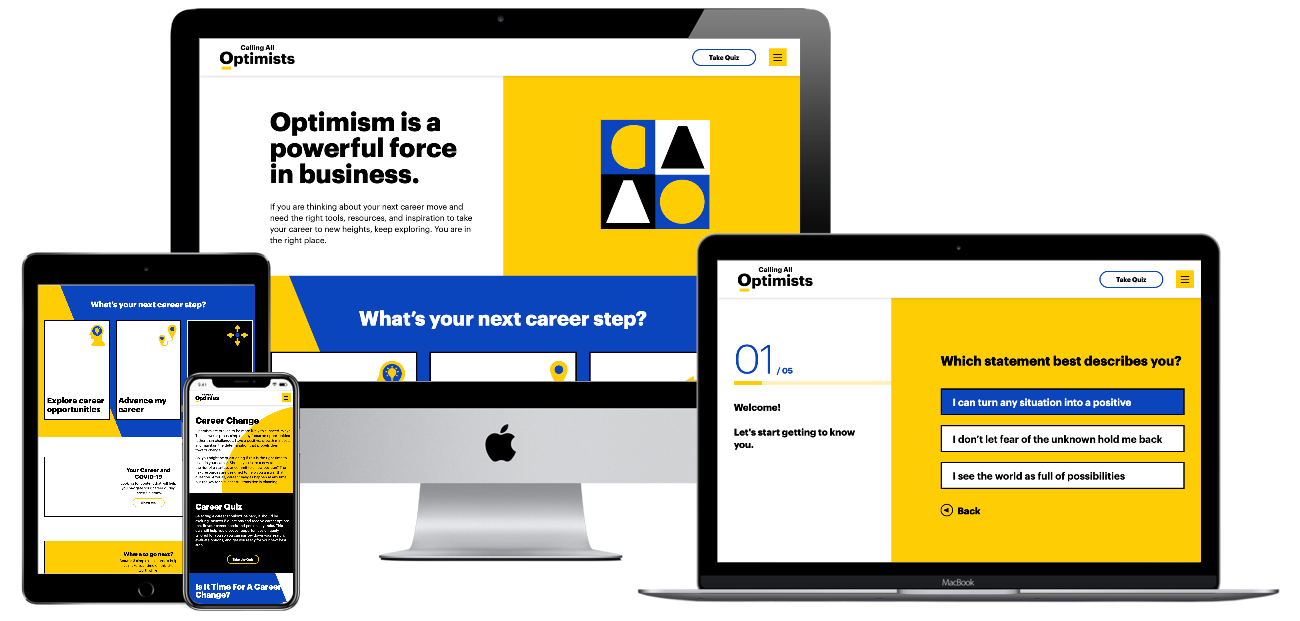
Ready to see how scroll-based animation can enhance your site? Contact Bluetext to learn about our motion design and interactive UX services.
The needs of a modern consumer are not static; they are constantly moving and advancing, shifting and changing. Customers adopt and discard products at breakneck speeds, seeking new opportunities for enjoyment and discarding them at the first sign of trouble. For a product to remain relevant in the eyes of today’s consumers, it must be able to not only meet their present needs but evolve alongside them to seamlessly adapt to future needs. Effective product management requires two critical steps; first, a deep understanding of how consumers use a product, secondly the ability to leverage that knowledge into actionable improvements. To do so, your business must understand product intelligence and its essential role in an impactful relationship with your customers.
What Is Product Intelligence?
Product intelligence refers to the use of software to collect and analyze data about a product’s performance with users. These systems gather and interpret information about how users’ interaction delivers critical insights on strengths and opportunities for improvement. Product intelligence also takes into account external factors that influence the customer relationship. Shipping, marketing, customer support, and countless other service touchpoints all influence consumer perception and ultimately the experience of your offerings. Product intelligence software helps aggregate these factors to evaluate the performance of your product holistically.
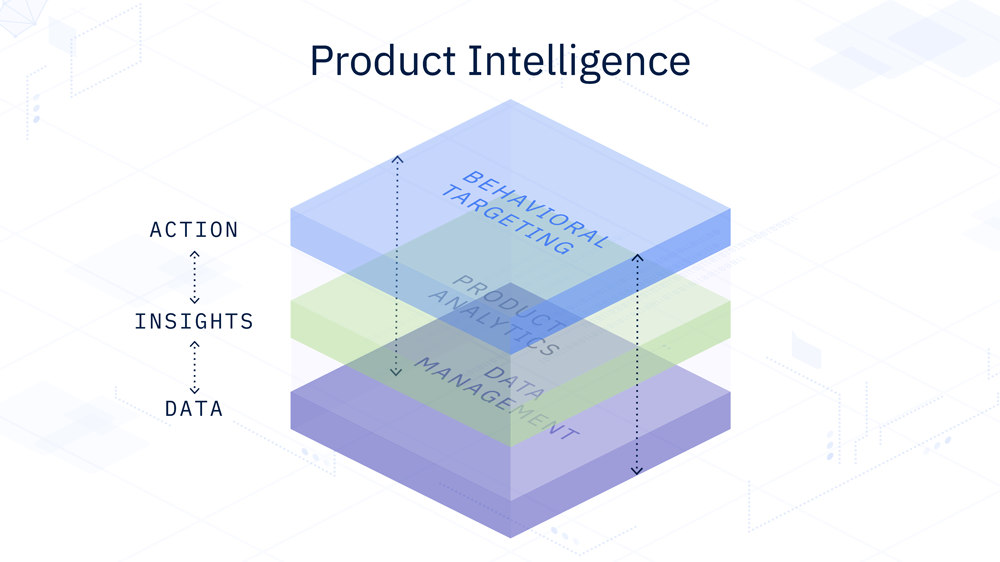
The ultimate goal is to create a positive feedback loop that enables product teams to iterate and innovate with greater speed and higher accuracy. By leveraging critical insights about the customer experience, product management teams can implement improvements to engage, convert, and retain users more effectively.
Product Intelligence Best Practices
- Understand the Customer Journey – While website interactions and app behavior are important, you need to include insights from marketing campaigns, ad spend, and other touchpoints to drive a deeper and more impactful understanding of your customers. Analytics, behavioral targeting, and customer data management cannot remain isolated from each other when optimizing product experiences.
- Collaboration Cannot Be an Afterthought – Services and integrations don’t get you a great product experience; teams do. For product intelligence to make a real impact on your business, you need to support efficient collaboration among product teams. That means being able to keep pace with rapid question-asking, in-depth exploration, agile decision-making, and generally enabling the most frictionless product development process possible.
- Assess Your Competitive Landscape – Your product offerings don’t exist in a bubble, and understanding the potential interactions consumers could have with the competition helps guide you towards truly differentiable improvements. You should strive to know your competitor’s products, strategies, and marketing tactics just as well as you know your own.
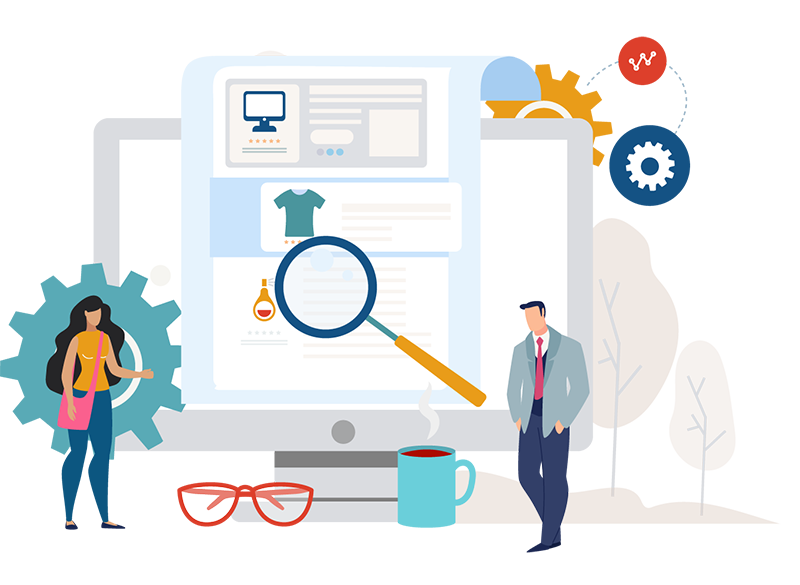
Why Is Product Intelligence Important?
Consumer preferences can change in an instant, and companies that can’t keep pace are destined to fail. Product intelligence ensures that your business will never be left behind by shining a light on the key factors that influence whether or not a consumer buys and continues using your products. Whether it’s through illustrating conversion paths, documenting user interactions, or detailing which marketing campaigns attract new visitors, the product intelligence process provides a holistic view of how your product adds value to people’s lives.
Navigating the high-stakes challenge of effective product marketing can seem like a daunting task. That’s where Bluetext can support. From omnichannel media campaigns to product videos & landing pages, Bluetext’s digital marketing experience can ensure customers old and new take notice of your company.
Video marketing can be a vital tool when it comes to leveling up your marketing program. Video, as a medium, is an exceptional opportunity to tell your brand’s story and mission using dramatic visuals, voiceover, and music. Video allows you to inject emotion and feeling into your content, something that written mediums like blog posts and product pages just can’t compete with. As some may say, the medium is the message. To humanize your brand and create a memorable connection, audiovisual content can build that bridge. Additionally, the ease with which you can upload your video content to a variety of social media platforms allows you to share your story with as many potential customers and reach as wide an audience as possible.
Below, we dive deep into the five reasons you need to use video in your marketing strategy and why partnering with a video design and production firm like Bluetext is the right choice for you.
1. Authentic Video Builds Trust
Perhaps most importantly, video content helps build trust between you and the prospective buyer. Trust is the foundation that drives conversions and overall sales. 57% of consumers say that videos give them more confidence to purchase online. With a great voiceover and a moving music track, videos can provoke a very emotive, and therefore, human response, more impactful than any generic landing page. Having your team on camera explaining your product or service is also a great way to provide prospective customers with a sense of your company culture and why they should work with you. Additionally, video content filmed and edited the right way evokes authenticity and transparency, both key points when aiming to build trust.
Through our work with Invictus, we produced a video around the story of their unique, military family-oriented mission that resonated with their prospective customers.
2. Explain Difficult Concepts With Ease
We live in a fast-paced visual-based world, where users are less likely to read through a product description and more likely to prefer an infographic or video that explains the solution succinctly. Technology has made us all accustomed to immediate satisfaction in finding the answers we seek. And if users don’t find the information they’re looking for, they lose interest or look elsewhere. Video content reduces the overall effort it takes to learn something new, especially when it may be a difficult concept to understand. If you’re launching a new product or service, explaining its features and advantages will be easier through video than a product landing page. The way the human brain processes information varies by individual, some are more visual learners, some auditory, and even some kinetic. If you don’t have the words to explain your product, the use of animation can help bring any concept to life. An audiovisual medium allows you to effectively reach a wider audience. The quicker someone can understand your product, the quicker the conversion from prospect to a customer will be.
Through our work with IoT cybersecurity company, Phosphorus, we told the story of their mission and the power of their groundbreaking platform.
3. Google Loves Video Content
There are a variety of reasons Google loves video. Perhaps most importantly, Google places great value in the length of time a user spends on your webpage. If your video content is enticing enough for the user to watch it all the way through, they’re more likely to spend more time watching a video on your site than reading through a lengthy landing page. Additionally, as we know, including keywords in your written content is important in any SEO strategy and helps improve your search rankings. Using the latest Video Intelligence API, Google can catalog the relevant keywords in your videos and increase your ranking in search engine results. Relevant keywords in your video and written content packs the maximum SEO punch into your webpage. Another great reason video content is a great SEO value is as video content can be adjusted to multiple screen sizes, Google ranks this content very high in search results.
4. Mobile Users Benefit
In the world we live in, everyone is glued to their smartphones throughout the day, watching, liking, and sharing content. According to a recent study, 90% of users actually watch videos on their smartphones rather than on computers or televisions. The ready availability of so much video content on smartphones is driving this statistic and will only grow as more and more content is produced. So what does this mean for you? Increasing the amount of video you put into the market will only increase the engagement with your content from prospective customers. Well-produced, informative content will be more likely shared and will lead to increased sales.

5. The Competitive Advantage
Stay one step ahead of the competition by producing video content. A lot of companies are still of the mindset that video content is way too expensive; and sure, some very well-produced content can get expensive when you’re factoring in custom shoots, actors, and multiple 8K cameras. That being said, video content doesn’t have to be expensive. With the right story and a camera as readily available as the one on your smartphone, you can create perfect video content that will resonate with your target audience and lead to many conversions. Being smart with your resources (financial & human) can result in an impressive video that no one would know was built on a budget.
Videos can play a massive role at every stage of the marketing funnel. That being said, creating high-performing video content takes time and effort. Ensure you have the right video content strategy from the get-go and that you maximize authenticity, creativity, and uniqueness. Need support putting together your video content strategy? Contact Bluetext today.
1,300 hours – that’s how long the average American spent on social media in the past year. People are on social media all day every day, with an average daily usage of about 145 minutes. Therefore, it is no surprise that social media has a large influence on us and the decisions we make in both our personal and professional lives. Today, social media is so prevalent that from a business standpoint, it would be a mistake to not take advantage of the medium.
Social media is a highly cost-effective way to market your brand and yield direct benefits. Social media is great for engaging with customers, keeping tabs on competitors, and developing a strong brand presence. Through social channels, you can heighten your brand’s awareness by cultivating a brand personality and quickly reaching not only existing customers but also prospective customers. Additionally, social media analytics, such as click-through rates, are able to give you timely feedback on what strategies work best to satisfy your intended audience. While it is important for your business to have a strong social media presence, you must also be careful to not overextend your social media program. Some businesses make the mistake of trying to maintain a presence on too many social media networks. Instead, it is best to focus on the few networks that will benefit your business the most.
3 Tips for Determining Which Social Media Networks are Worthwhile
1. Know Your Audience
It is crucial to know who your target market is and what social platforms they prefer. Ask yourself – what demographic is my target audience? Different social media channels appeal to different age groups, therefore it is important to identify what age group your target market falls under. For instance, TikTok has a younger audience with 60% of users being under 25 years old; whereas Facebook draws in a more mature audience, with most of its users being between 25 and 44 years of age. Therefore, if you are specifically targeting Generation Z, Facebook may not be the best route to take. Instead, your efforts should be on networks that draw in more youngsters, such as Snapchat or TikTok.
On another note, Facebook offers the largest audience with 2.7 billion active monthly users. The app has great features that allow you to customize your social media marketing and better optimize your corporate social presence. You can even go as far as creating a business account, making use of advertising tools and analytics offered. However, depending on the niche audiences you may be trying to reach, it is important to understand the pros and cons of Facebook relative to, say Instagram, where visuals are a key focus and artistic niches are known to excel.
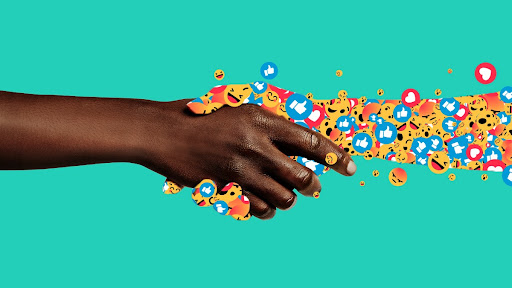
2. Think About Engagement
How do you want to engage with your audience? Each social media network offers different mechanisms to interact with users. Twitter is the best for directly engaging with customers. With Twitter, you can provide short updates about your business and interact directly through hashtags, mentioning users, liking posts, retweeting, etc. The fast-food chain, Wendy’s, for example, has had success using Twitter to create a unique brand voice through their witty interactions with customers. In contrast, YouTube is a strong option for driving traffic onto other web pages. Through analytics, YouTube has proved to increase website traffic, in which users will view an ad/video on YouTube and then proceed to click on the link to your website homepage.
It is also important to consider how your customers interact with technology. Are they heavy smartphone users? If so, Instagram might be the best application, given that it is pretty much a solely mobile app with 1 billion active users. Channels like LinkedIn are optimal for those whose customers are heavy desktop users.
Next, it is important to find the right amount of engagement with your customers. You do not want to be too active that you are annoying users, but then also not active enough that you don’t stay relevant. To combat this problem, it is best to have a posting schedule to maintain the right balance. The goal is to stay relevant in the minds of your customers, without irritating them to the point of losing followers. Also, engagement isn’t built on one-way communications; you must offer users an opportunity to participate in the conversation via thought-provoking questions or even surveys.

3. Consider What You Are Selling
Of course, your social media strategy factors in what you are selling and who you are selling to. If you are selling a product, then Instagram might be a better choice given its heavy emphasis on visuals. However, if you are selling a service then Twitter might be the better application to use, where the reliance is on words rather than pictures. On the other hand, Pinterest is great for small and niche businesses where you can market directly on the site. LinkedIn is great for B2B firms that are trying to reach business decision-makers who may not be as active or reachable on more consumer-focused social platforms. With LinkedIn, you can promote your business all while positioning yourself as an industry leader and recruiting top talent. Even more so, you can stand out from competitors through thought leadership pieces published on LinkedIn. Blog posts covering how your products/services related to issues pertinent in the world can put your business at the forefront.
In each avenue, social media provides an opportunity for businesses to control the narrative. You are able to pick out what content you want to display and dictate the kind of engagements you have with customers. It is great for reputation management, raising brand awareness, and establishing yourself as an industry leader. Using social media in the right way has the power to transform your business, making your marketing efforts worthwhile. Without a solid social media presence, your business and brand may be absent from key stages of the buyer’s journey or simply missing opportunities to extend overall brand awareness.
Choosing the right social media network to promote your business is crucial for success. Contact Bluetext if you are interested in perfecting your social media presence.